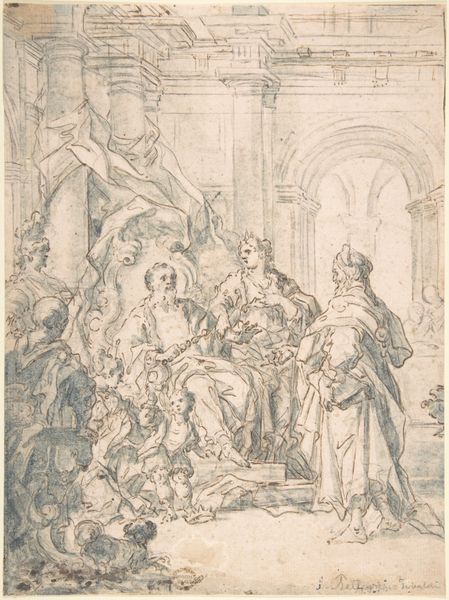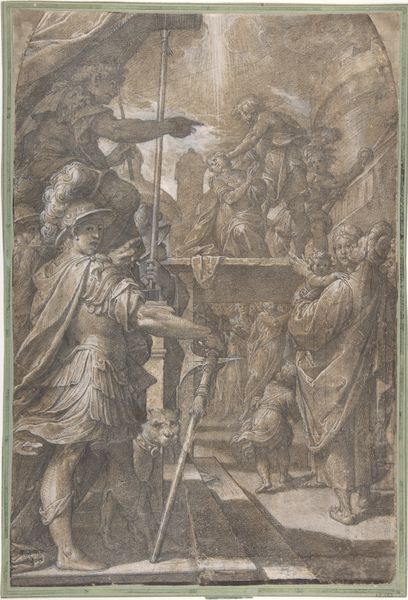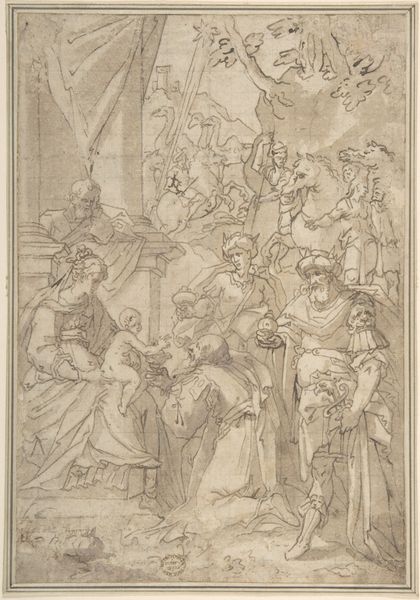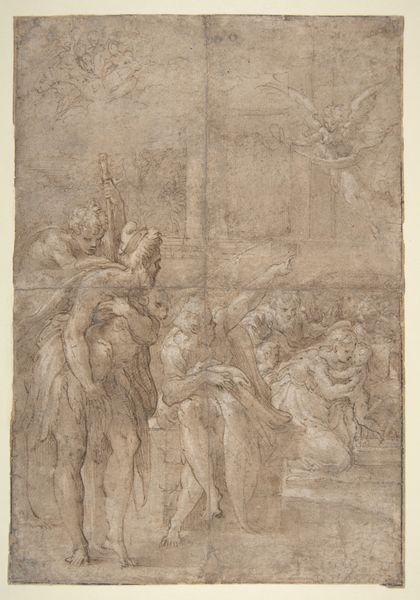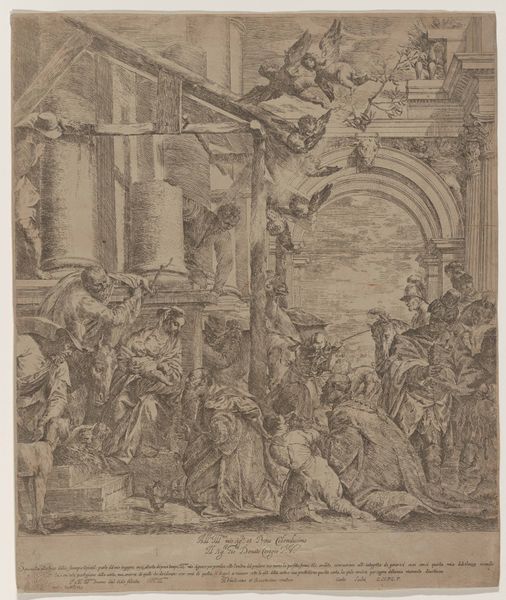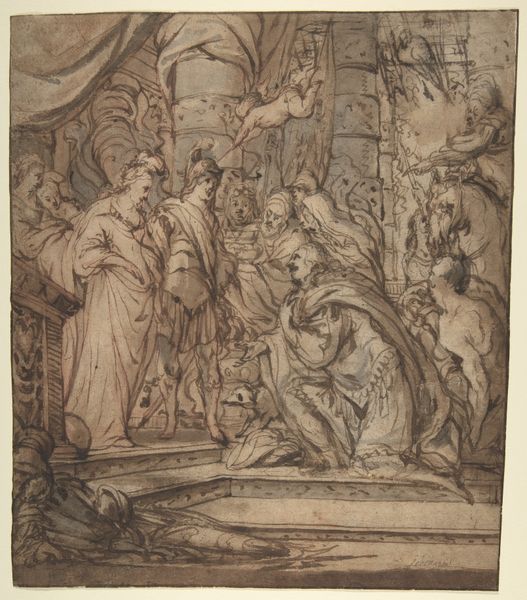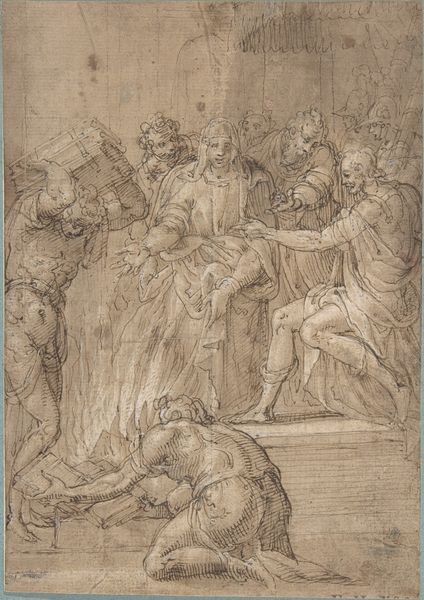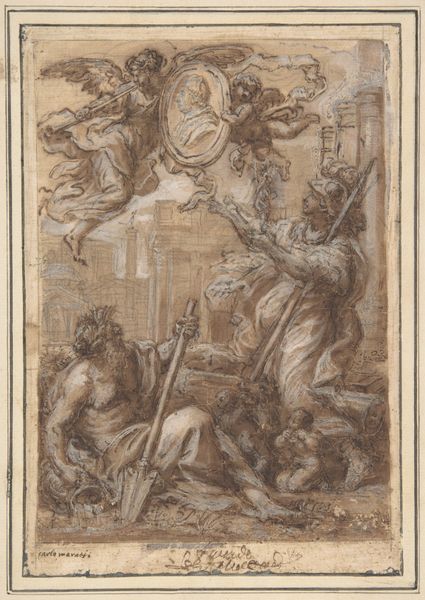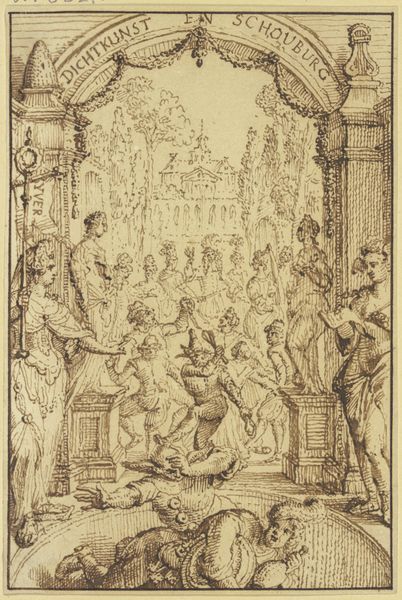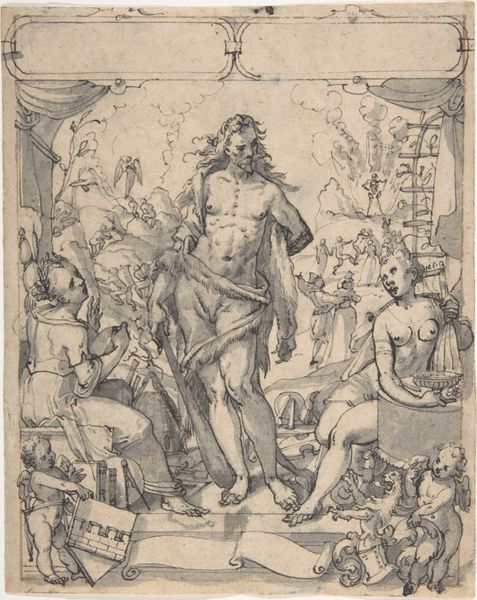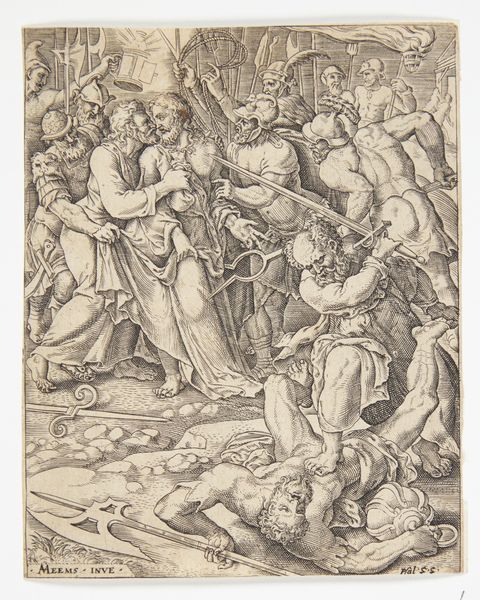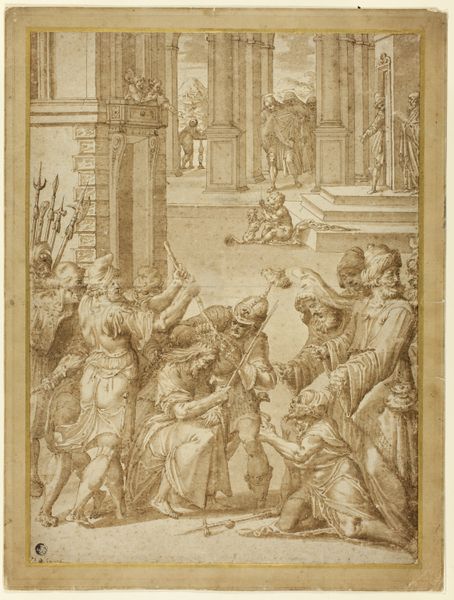
drawing, print, ink
#
drawing
#
ink drawing
#
narrative-art
#
ink painting
# print
#
figuration
#
ink
#
history-painting
#
academic-art
Dimensions: 15-15/16 x 10-5/8 in. (40.5 x 27.0 cm)
Copyright: Public Domain
Editor: We are looking at Pietro da Cortona's 1637 ink drawing, "Study for the Age of Bronze," currently held at the Metropolitan Museum of Art. There’s so much happening here - so many figures, seemingly caught in this dramatic, complex moment. What strikes you most when you look at it? Curator: The drawing immediately suggests a reflection on power and its visual representation within 17th-century society. Da Cortona was heavily involved in the artistic programs of the Barberini papacy. Note how the elevated figure is presented, surrounded by supplicants and armed guards. How might this reflect the social hierarchies of the time, particularly the relationship between rulers and the ruled? Editor: I see what you mean! The figure on the stairs definitely commands attention. Is the medium, the ink drawing itself, significant in how this power is portrayed? Curator: Absolutely. Ink, in the context of the 17th century, allowed for rapid reproduction and dissemination of images. These prints could serve as powerful tools for shaping public perception and reinforcing the authority of those in power. Consider where and how such images would circulate – within courtly circles? Broader society? What effect might this intended reach have had on the work's composition and messaging? Editor: So, the artistic choices here weren't just about aesthetics but about projecting a certain image of authority for a specific audience. That’s fascinating! I'm realizing how much the distribution of an artwork impacts its significance. Curator: Exactly. Understanding the mechanics of art production, dissemination, and reception is key to grasping its function in shaping social narratives. I see a greater appreciation now. Editor: Yes, absolutely. I will consider what other agendas or intentions are visible or invisible. It sheds a new light on even what seems purely artistic. Curator: Wonderful! Keep questioning, keep looking. That’s how we unpack history through art.
Comments
No comments
Be the first to comment and join the conversation on the ultimate creative platform.
